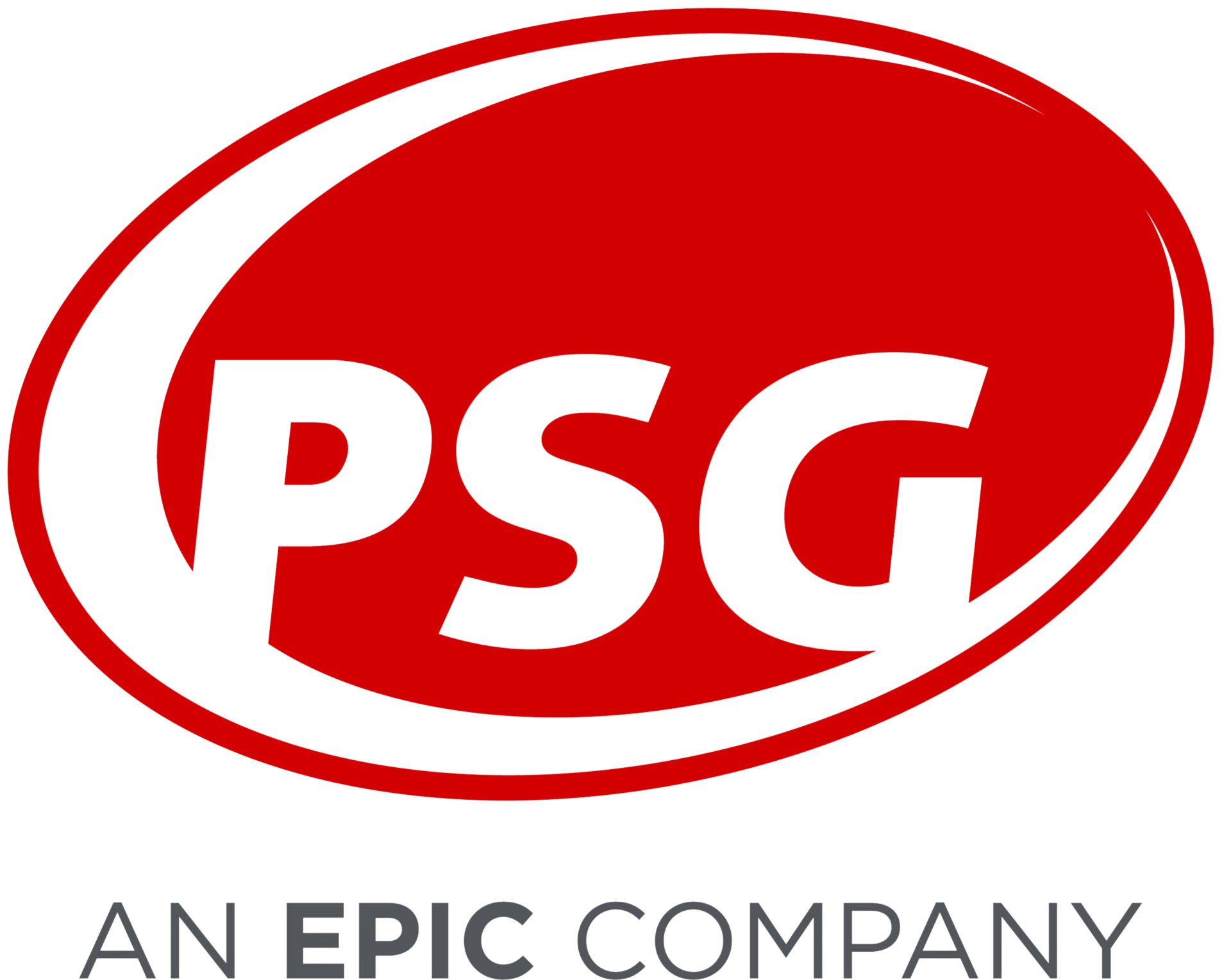Real Questions, Real Answers: What health plans need to know about the state of specialty right now
Posted on November 4, 2020
Another double-digit increase (13.6%) in per member per year cost underscores the need for close monitoring and management of specialty. Successfully partnering with health plans throughout the country helps PSG understand their unique challenges and opportunities regarding the state of specialty.
After reviewing 99 million pharmacy and medical claims, Renee Rayburg, RPh, and Libby Johnson put on their thinking caps to deliver the insights that matter to health plans. In a focused discussion with a core group of leading health plans, Renee and Libby explored those hot topics that keep health plan leaders awake at night.
This important discussion was powered entirely by pre-submitted questions from the health plans in attendance.
Part One: Specialty Spend and Trend – Unpacking utilization and medical pharmacy integration
Q: We all know that the specialty trend continues to increase. It accounts for such a large portion of spend, both on the pharmacy and the medical side, for health plans out there investing in their populations and keeping them healthy. Can you talk a little bit about some of the biggest drivers in 2019 for specialty spend and trend?
Renee Rayburg:
Specialty still is a top concern to most payers and health plans. We continue to see increases at double digits in trend. Across our book of business from 2018 to 2019, we saw a 13.6 percent increase in trend.
We do still see a relatively even split between the pharmacy and medical. About 60 percent of the spend is in pharmacy, 40 percent in medical. Most plans are approaching 50 percent of their total drug spend on specialty drugs if they haven’t already.
What is interesting this year is that utilization is driving most of that trend. We saw an increase in utilization over the previous year of about 10.3 percent, while the cost per claim was only increasing about 3.1 percent.
Q: What do you feel may be contributing to this trend?
Renee Rayburg:
Think about the state of specialty just a few years back. A small percentage of utilizers used specialty drugs, maybe 1 percent or so, and they were responsible for a considerable part of the cost.
We saw a lot of that driven by medications used to treat rare conditions, but we see an entrance to the market of some drugs used for things we may not necessarily consider a specialty condition. We’re starting to see an increase in utilizers just based on that.
There’s also the matter of expanded indications, which contributes to the increase in utilizers. Once some of these drugs come to the market, their indications continue to expand. A great example of that is DupixentⓇ. Dupixent ranked 49 in 2018 in our book of business, and it went up to 21 in 2019. The utilization trend was about 110 percent.
Q: What attributed to such a dramatic increase in that example?
Renee Rayburg:
Dupixent is a top trend driver for most of the plans that I work with. A big part of that is because it was approved in March of 2017 to treat adults with atopic dermatitis. Over the last three years, we saw it get two additional indications for asthma and nasal polyps. Then we saw it get expanded indications for age as well. So, the drug can be used to treat kids as young as six.
Sometimes it can be challenging to keep up from a utilization management perspective with all of the expanded indications and increases.
Q: Are there any other examples of trend drivers that come to mind?
Renee Rayburg:
Another drug we saw was TrikaftaⓇ, which is a new drug for cystic fibrosis (CF). This drug can target a genetic mutation found in 90 percent of CF patients. The previous three drugs could only treat about 50 percent.
Trikafta is another top trend driver for some payers, and the drug is pretty costly. It’s over $250,000 a year.
Q: It’s interesting to see a lot of utilization is driven by medications already in the market, as we find new ways to use them, sometimes for common chronic conditions rather than for the rarer conditions. Great insights.
Libby, to add a little color to this, we know it’s been an extraordinary year. It would be remiss of us not to acknowledge that. How has COVID-19 affected specialty cost and utilization in the past six months or so?
Libby Johnson:
It has been, I’m not sure the right word for it, a unique year, right? It’s fascinating to look at specialty drugs in the first six months of 2020 compared to the first six months of 2019. Within our book of business, there was still an increase from an overall PMPM cost perspective. Both utilization and cost increased both across pharmacy and medical.
Q: Do you see differences between pharmacy and medical?
Libby Johnson:
When you compare pharmacy versus medical, different patterns emerge. That’s expected.
On the pharmacy benefit, we saw a double-digit increase from both the cost and utilization perspective.
On the medical side, we saw a significant reduction in utilization. That isn’t a surprise as we know what we’ve all been living through this year. When we had a more defined shutdown in the April and May timeframe, folks were not going to physician offices or outpatient facilities to administer their drugs and having more home infusions. We’re seeing that now from a utilization perspective in our data.
In aggregate, we still are seeing an increase.
Q: What do you think is driving that?
Libby Johnson:
We think it’s driven maybe by a couple of things, such as relaxed criteria. Since there were drugs that patients needed to adhere to during that timeframe, criteria were relaxed. We also saw some members and patients opt for early refills.
Those are two examples that may contribute to why we saw an increase on the pharmacy side.
As we roll through the rest of this year, I’ll be interested to see how things continue to play out. As Renee indicated, growth is continuing. She’ll talk about it as we look at the pipeline and the world of specialty beyond COVID.
It’ll be interesting to see, six months from now, how the year shapes out.
Q: Of course. We’re all curious to see what happens from the utilization standpoint getting into the balance of the year, where we worry folks may have deferred treatment.
At PSG, we work with the country’s leading health plans, and we know that they’re always seeking ways to improve how they manage their specialty spend and trend.
Libby, do you want to talk a little bit about some of the best practices you see with the health plans you work with today?
Libby Johnson:
A lot of what I do day in and day out is talking with our current clients and understanding how to best manage their population, not just from a cost perspective but from an overall holistic perspective.
When I think about what’s best in class from a health plan perspective, it’s bucketed into two areas. I think about the upfront setup. You need to have a solid PBM contract. On the pharmacy benefit side, we are all aware of how important that is.
You need to have a strong contract that allows for the ability to negotiate throughout the term and change as the market dynamics change and monitor going forward.
You go into a year, and you need to have your table set. That’s the first key. The second key is really, what happens after you have that setup?
When it comes to the ongoing management of a plan, you need to understand your data. You think of both your pharmacy and your medical data and getting to an integrated view. It’s a hot topic in the market right now. Vertical integration can mean looking at the full profile of a patient from a 360 perspective. We hear those terms a lot.
It sounds simple when I’m saying, “Hey, let’s look at integrated data.” But it’s messy. Anybody that’s tried to work with that type of data knows it’s a big lift. Magic happens when you do get that data together, but it’s not simple.
Q: Similar to the turn of phrase we hear a lot in our industry: set it and forget it. You can’t set it and forget it.
Libby Johnson:
Exactly. Getting the rates right on the front end, getting benefit design set up, getting the formulary right; all those things are critical, but there are a lot of ways that things can go wrong throughout the year. Monitoring that by looking at your data is vital and looking at your data across both medical and pharmacy is where the most potent opportunities exist.
Q: Are there any specific programs or strategies that have been particularly successful in doing that?
Libby Johnson:
Absolutely. Often, clients will say, “Okay, I’m going to take a category approach.”
What does that mean?
A category approach means evaluating categories to understand where you have a higher trend, higher spend—or to Renee’s call out—where are there new indications for a drug in that category that you need to review.
First, it means reviewing clinical criteria. Understanding what the requirements are on the pharmacy benefit, what they are on the medical benefit, and ensuring those are aligned. Regardless of the benefits, it’s imperative to ensure that you have the right diagnosis for your drugs. Where is the most appropriate utilization from a member perspective within that category?
Second, we look at things from a channel management perspective. Are drugs administered across pharmacy and medical? Or even within the medical channel, where is the best channel or site of care for this drug?
And understanding it requires more than cherry-picking here and there. It’s about gaining a comprehensive understanding. When I incorporate rebates and full provider contracts, where is the best channel for this drug within the category?
Third, patient outcomes should be tied to a provider. This entails identifying the highest cost provider, then taking it a step further, and determining the best patient outcomes by providers in that category.
Q: Excellent example. Are there any other examples of successful strategies that come to mind?
Libby Johnson:
Another example is high-cost member management. Of all the plans that I’m working with, they all have this on their radar. It’s not a new concept. Yet, in the last couple of years, it has gained more focus. You can drive meaningful savings and create best-in-class utilization by looking at your top members.
Typically, the plans that I work with look across both benefits to review those high-cost members and evaluate them from a total cost of care perspective.
Of course, there are many things that can be done to manage these members. Some examples of what we see plans doing from a high-cost management perspective include:
- Ensuring these members are in the case management or care management workflow within a health plan to ensure optimal management.
- Negotiating a one-off reduction in fee schedule or fee schedule management with a provider on the medical side.
Renee Rayburg:
Libby, would you also add what you’re seeing in terms of managing leakage?
Libby Johnson:
Definitely. When we’re helping manage leakage, it entails things like negotiating with a provider network. You want to make sure that you can quantify specifics. A provider network may say, “Hey, we have these great rates.” That’s good, but how much of my utilization is getting applied to those great rates?
More importantly, what is leaking out of that network? A recent example that comes to mind is a health system health plan that had driven all of their drug administration on the medical benefit side to the health system. Yet they had no idea about performance because the data, as I mentioned, isn’t easy to get.
When we did the analysis, they came back and said, “Wow, 7 percent of my utilization has been going outside of my provider network or my health system. That’s way more than we thought and could be why our costs were higher.”
Of course, then it allows for intervention and putting a strategy together on what to do next.
It’s vital to review what’s happening with drug utilization at a patient or population level. We know that drugs are often the first indicator of the onset or progression of an illness. Using that integrated pharmacy data to get ahead of care management can make a huge difference for health plans.
Stay tuned for the next part in this series, Biosimilars: Understanding adoption and pipeline, launching on November 13.
If you don’t want to wait until next week for more information, download the 2020 State of Specialty Spend and Trend Report today!



